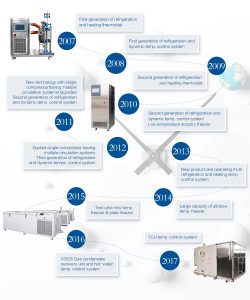What are the decarboxylation reaction conditions and process temperature control?

The decarboxylation of aromatic acids is easier than that of fatty acids. For example, benzoic acid can be decarboxylated by adding a little copper powder as a catalyst in quinoline solution and heating.
When a strong electron-withdrawing group is attached to the α-C of the carboxylic acid, heating can make it decarboxylate more smoothly. For example: when the ortho-diaromatic organic acid is heated, it is easy to remove a carboxyl group, but when the temperature is low, an acid anhydride will be formed. When different polycarboxylic acids are heated, according to the different activities, some are decarboxylated, some are dehydrated, some are decarboxylated and dehydrated again, dehydration above pimelic acid, and general decarboxylation below.
Fatty acid: This reaction is generally not used to prepare alkanes for general fatty acids, especially long-chain fatty acids, because the reaction temperature is too high, the yield is low, and it is not easy to separate. However, if the α-carbon atom of the fatty acid has an electron-withdrawing group such as nitro, halogen, carbonyl, cyano, etc., it makes decarboxylation easy and the yield is high, but their reaction processes are not exactly the same.
The general decarboxylation reaction does not require a special catalyst, but is carried out under the following conditions: (1) heating; (2) alkaline conditions; (3) coexistence of heating and alkaline conditions. The most commonly used decarboxylation method is to heat the sodium salt of carboxylic acid with soda lime (CaO + NaOH) or solid sodium hydroxide, and a decarboxylation reaction occurs, that is, -COONa is replaced by an H atom to generate a carbon atom less than the sodium carboxylic acid salt alkanes.
It can be seen that no matter the decarboxylation reaction of any substance, it is necessary to carry out temperature heating control during the reaction process. LNEYA specializes in the production and development of heating systems, with a temperature control range of 50 degrees to 300 degrees, which is suitable for the needs of pharmaceutical and chemical companies in various process production and experimental use. It can realize high temperature cooling process, directly cooling from high temperature of 300 degrees to 50 degrees. Equipped with a heating and cooling integrated container, the heat exchange area is large, the heating and cooling rate is fast, and the demand for heat transfer oil is small. The entire cycle of the product is closed, there is no oil mist volatilization at high temperature, and the heat transfer oil will not be oxidized and browned; it has the function of correcting the internal cycle temperature probe PT100, and has self-diagnosis and intelligent safety alarm. The equipment is equipped with a variety of safety protection functions such as high-voltage pressure switches, overload relays, and thermal protection devices to ensure the safety of your experiments and production.
관련 권장 사항
-
Temperature control system for controlling integrated circuit chip test temperature
1111Advances in semiconductor technology have led to the development of next-generation electronic devices such as integrated circuits, which have more and more active components, higher circuit complexity, smaller area, and tighter wiring. These attr...
세부 정보 보기 -
-
LNEYA는 전문적인 신에너지 차량 모터 감지 시스템을 생산하는 엘리트 기업입니다.
1655In the development of modern automobiles, new energy vehicles have become the mainstream era of contemporary automobile development. Among them, the drive motor system is one of the main components of new energy vehicles, and its performance is ...
세부 정보 보기 -
냉동 및 난방 순환 시스템에 TCU 적용
1241의약품 합성 및 정밀 화학 작업 과정에서 우리는 종종 산화 반응 및 산-염기 중화와 같은 강력한 발열 반응에 직면합니다. 이러한 강한 발열 반응의 경우 제어가 부적절하거나 제어가 부적절하면 ...
세부 정보 보기
 LNEYA 산업용 냉각기 제조업체 공급 업체
LNEYA 산업용 냉각기 제조업체 공급 업체













